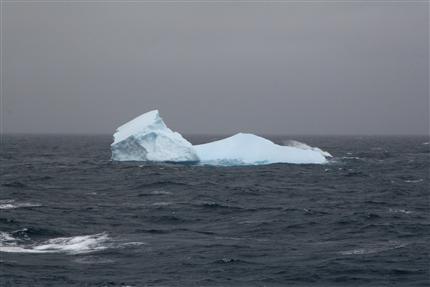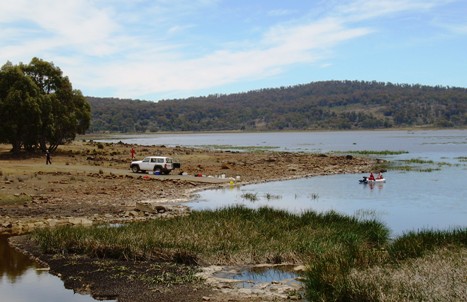On edge Newsletter 21: VÆDDEREN has begun the longest leg of the expedition. The ship has passed the polar front and is navigating seas interspersed with enormous icebergs: air temperatures have dropped to near freezing.
Dato 18.1.2007
The leader of this part of the voyage, Professor Søren Rysgaard of the Greenland Institute of Natural Resources, chose this moment to publish his findings on the significance of sea ice for global warming. “Until now we had thought that sea ice formed a layer over the water which prevented the exchange of CO2 between air and sea. This is not the case – on the contrary, we have found evidence that ice sends large amounts of CO2 and salt down to the ocean floor”, says Rysgaard.

Photo: Jens Tang Christensen, Aarhus Universitet
Sighting the first ice…
Mbuke skeleton find
The Galathea 3 project ‘Globalisation - past and the present’ has made an unusual find on the small island of Mbuke in the Bismarck Sea north of Papua New Guinea. At the house in which archaeologists were staying, a skeleton was unearthed at a depth of 1.1 metres during a dig in the back garden. The age of the find is at least 2000 years.
The project ‘biological interplay and biodiversity in lakes’ has made further inroads, this time in Tasmania. Focus of their attention is the lakes on the central plateau, where their nets have yielded many finds.

A picture from the project diary
The project that looks at biological interplay and biodiversity in lakes has arrived in Tasmania. Nets will be cast at this lake, ‘Lagoon of Islands’.
A satellite changeover on the edge
On Saturday morning (European time), 20 January, VÆDDEREN will be 65.27° south and 116.39° west . This is the only position at which there is cover from the present satellite and the satellite that will follow the expedition on its last leg over the Atlantic.
The elevation angle for both satellites is a meagre 2 degrees. In other words, VÆDDEREN must contact a satellite barely 2 degrees above the horizon by pointing the antenna almost horizontally over the surface of the water. And this in open seas!
It will not need much of a sea before contact is disrupted. So we are crossing our fingers for calm on Saturday. ..
|